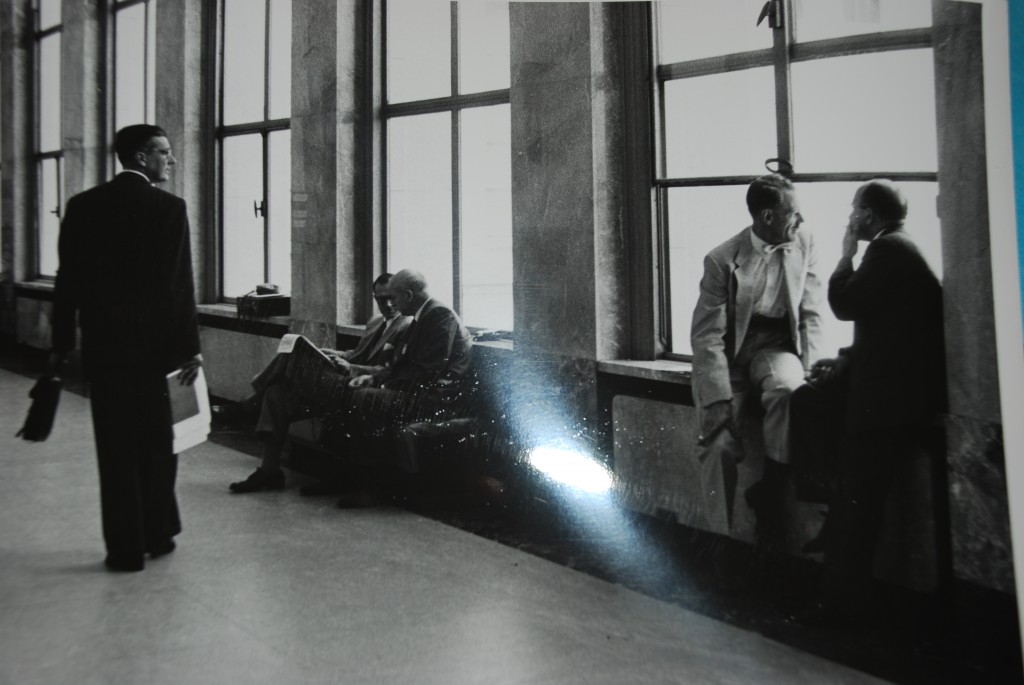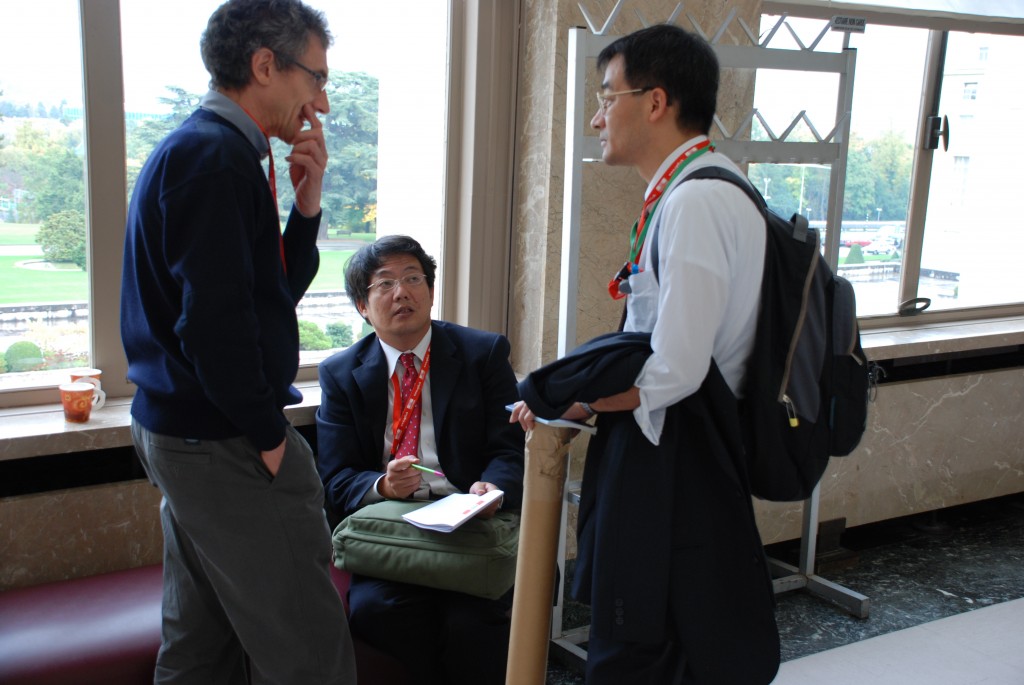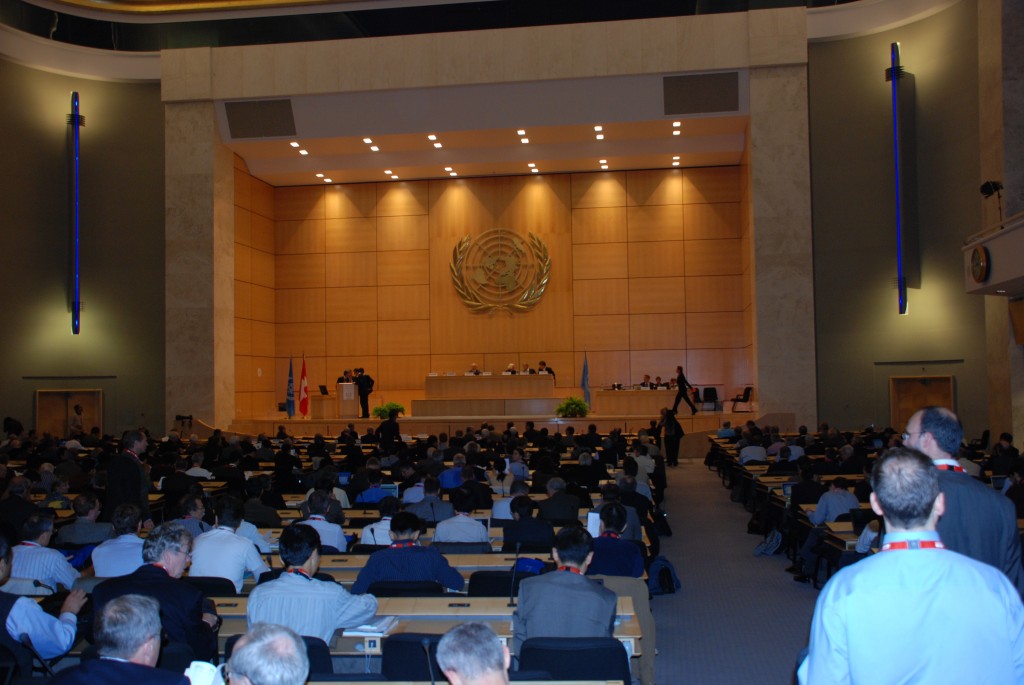ITER NEWSLINE
54
Fusion Olympics held in Geneva
Sabina Griffith
Fusion Olympics held in Geneva

Discussions in the corridor: then ...

... and now ...

For its 22nd edition, the IAEA Fusion Energy Conference came back to where it started 50 years ago.
In the historic assembly hall, more than 500 presentations and talks were given on the latest magnetic confinement experiments, fusion technology and power plant design, innovative concepts and also inertial fusion experiments and theory. A special session was dedicated to ITER activities with 10 presentations and 49 posters displayed for discussion. In addition 60 papers on ITER-related science and technology were submitted to this year's conference. ITER Director-General Kaname Ikeda, after signing the Cooperation Agreement with the IAEA, presented an update on the project's progress including the ongoing site preparation. Principal Deputy Director General Norbert Holtkamp then summarized the outcome of the design review and the impacts the technical updates will have on the ITER baseline design. The details were later picked up by the various ITER representatives in their talks that will be made available by the IAEA shortly here.
In a special evening session on Wednesday, the conference organizers celebrated the anniversary by looking back on the history of 50 years of magnetic confinement fusion research. The key speakers at this session were Jiangang Li, Dale Meade, Valentin Smirnov and Kunioki Mima.
While Smirnov took the lead marching through half a century of tokamak research in Russia, where the "toroidal chamber with magnetic coils" was born, Dale Meade literally took the next step. "We need one more experimental step, one more large tokamak to go from the experimental confinement results obtained by earlier experiments such as JET, TFTR or JT60 to ignition conditions," Dale said. "That step will now be fulfilled by ITER." And as it was the time to look back, Dale, a devoted advocate for fusion and the creator of the FIRE website, did not hesitate to show the correlation between the oil crises in the 1970s and the 1980s and fusion funding. "We have been ready for that step for 20 years. It is good that it is finally happening, but bad that it took so long."
Jiangang Li from China then caused some discussion among the audience, when he proposed a more cost-efficient approach to fusion by combining national efforts, perhaps even closing some of the current experiments in support of a few big projects. "Twenty-six years ago I was trained as a fission engineer," Jiangang Li ended. "And today I have a dream. In that dream I press a button and the light will turn on. Light powered by fusion energy."
return to Newsline #54




